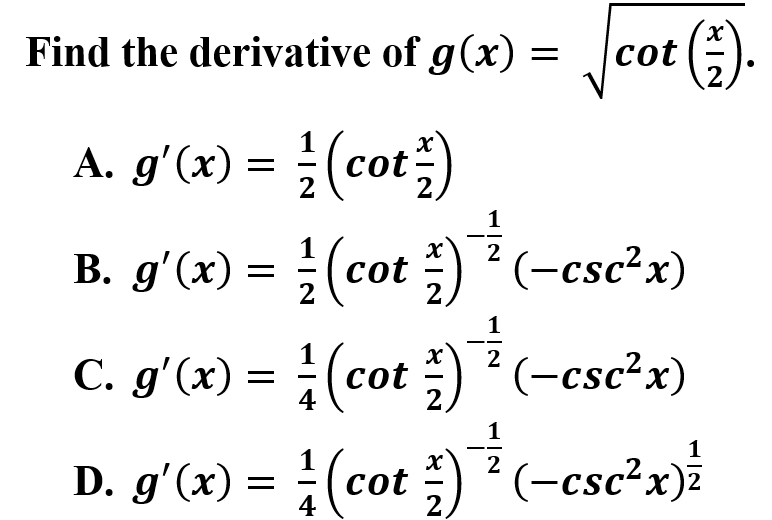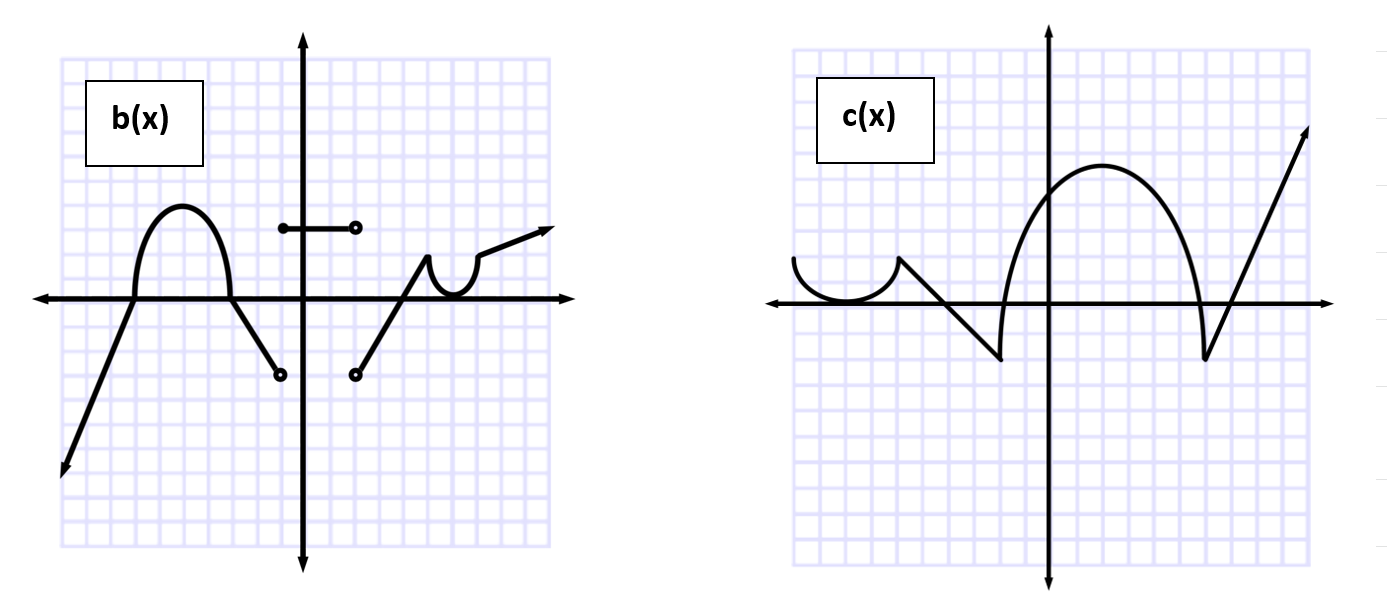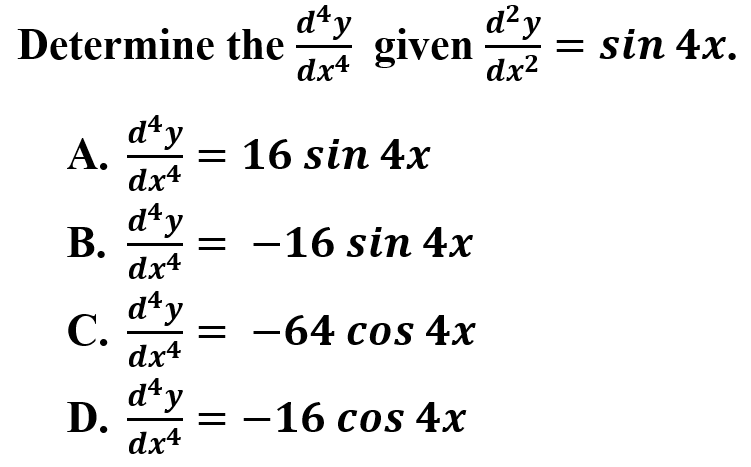AP Calculus AB/BC ♾️
279 resourcesSee Units
Answers and Review for Multiple Choice Practice for Differentiation: Composite, Implicit & Inverse Functions

⛔STOP!⛔ Before you look at the answers make sure you gave this practice quiz a try so you can assess your understanding of the concepts covered in unit 1. Click here for the practice questions: AP Calculus Unit 3 Multiple Choice Questions.
Facts about the test: The AP Calculus exam has two sections of multiple choice: 30 questions in 60 minutes with no calculator, and 15 questions in 45 minutes with a calculator.
*The following questions were not written by CollegeBoard and although they cover information outlined in the AP Calculus Course and Exam Description the formatting on the exam may be different.
1.

A is correct because the derivative of f(x) is obtained by taking the derivative using the chain rule. To utilize the chain rule, you will start by taking the derivative of the outside and work your way in.
2.

C is correct because the derivative can be obtained by utilizing the chain rule. Please keep in mind that you will need to continue taking the derivative until you get to the 'center' of the function.
3.

D is correct for h'(x), the chain must be utilized in a more theoretical approach. Once you find h'(x), you will follow the table to determine the values.
📄 Unit 3.1: The Chain Rule
4.

B is correct because you use the definition of chain rule to determine a'(x). Then find the values located on the graph. Remember to find b'(x) and c'(x) you have to determine the slope at the point on b(x) and c(x).
5.

C is correct because implicit differentiation is utilized when the equation is not solved for y or when it can't be solved for y. This method requires you to include dy/dx within the problem and solve dy/dx.
6.

D is correct because to derive, you need to utilize implicit differentiation. Once the derivative is obtained, plug in the point (-2, 4) and solve for dy/dx.
7.

C is correct because the inverse function utilizes the original function along with the its inverse. It can be used as a different form of composites.
8.

B is correct because trigonometric functions need to be easy to recall while taking derivatives. Remember that all derivatives of trigonometric functions which uses a square root must be subtraction.
9.

D is correct because inverse trigonometric functions need to be easy to recall while taking derivatives. Remember that all the inverse of cosine and cosecant have restricted domains.
10.

A is correct because this derivative involves an inverse trigonometric function with a chain rule. Remember to replace the 2x for x in the derivative and square.
11.

D is correct because higher-order derivatives require taking the derivative multiple times (depending on the question). In this case, you must utilize the quotient, power, and chain rule. Do not forget that the derivative of e^4x is e^4x, but you must take the derivative of the exponent, which is 4.
12.

C is correct because the double prime indicates the second derivative. You need to take the derivative twice of ln which requires converting to a rational and then subtracting exponents.
13.

B is correct because the 4 notation indicates the 4th derivative. Given the 2nd derivative you would need to take the derivative twice to obtain the 4th derivative.
14.

B is correct because this derivative can be taken using the power rule or quotient rule and chain rule. Be sure to take the derivative of the inside of the parentheses.
15.

D is correct because using implicit differentiation and the product rule, dy/dx should result in only one part. Simplify only what is needed to answer the problem.
What can we help you do now?
🤝Connect with other students studying AP Calculus with Hours
Browse Study Guides By Unit
👑Unit 1 – Limits & Continuity
🤓Unit 2 – Fundamentals of Differentiation
🤙🏽Unit 3 – Composite, Implicit, & Inverse Functions
👀Unit 4 – Contextual Applications of Differentiation
✨Unit 5 – Analytical Applications of Differentiation
🔥Unit 6 – Integration & Accumulation of Change
💎Unit 7 – Differential Equations
🐶Unit 8 – Applications of Integration
🦖Unit 9 – Parametric Equations, Polar Coordinates, & Vector-Valued Functions (BC Only)
♾Unit 10 – Infinite Sequences & Series (BC Only)
🧐Multiple Choice Questions (MCQ)
✍️Free Response Questions (FRQ)
📆Big Reviews: Finals & Exam Prep

© 2023 Fiveable Inc. All rights reserved.